The Apple Watch Series 7 offers the same suite of sensors as the Series 6. These include an accelerometer, a gyroscope, a heart rate sensor, a barometer, an always-on altimeter, a compass, an SpO2 sensor, and a VO2 max sensor. These sensors have a host of health and fitness tracking features, including blood oxygen monitoring, heart rate monitoring, sleep tracking, fall detection, workout tracking, and more.
Additional features include a new S6 processor that is up to 20% faster than the S4 and S5, a 2.5× brighter always-on display, and an always-on altimeter. The Series 6 watch was updated with faster charging hardware such that it completes charging in ~1.5 hours. Force Touch hardware was removed, consistent with the removal of all Force Touch functionality from watchOS 7. The Series 7 is also equipped with new hardware that enables ultra-rapid, short-range wireless data transfer at 60.5 GHz, though Apple has not fully explained this new functionality.
Apple's latest smartwatch is mostly an incremental upgrade from the Apple Watch 6, maintaining an 18-hour battery life, the same CPU and adding no new health features. But the enlarged display is game-changer, and makes it difficult to return to previous-generation models. The Series 7's big screen adapts wearable computing for more everyday applications, making it practical to be productive from your wrist.
This new Apple Watch also shares the same sensor as last year's, so you'll have to wait for the hotly anticipated blood pressure and glucometers features in Apple Watch Series 8 . However, you can still track your blood oxygen levels, ECG and heart rate, so it's still a solid smartwatch for fitness buffs. There's also a new mindfulness app, cycling fall detection and calorie burning calculator, which overall makes this the best Apple Watch to date. At just 1.7 mm thin, the narrower borders of Apple Watch Series 7 maximize the screen area of the display while minimally changing the dimensions of the watch itself. Apple Watch Series 7 also features a user interface optimized for the larger display, a new QWERTY keyboard, plus two unique watch faces — Contour and Modular Duo — designed specifically for the new device.
Users benefit from the same all-day 18-hour battery life,1 now complemented by 33 percent faster charging. The ECG system has received clearance from the United States Food and Drug Administration, a first ever for a consumer device, and is supported by the American Heart Association. This device can also detect falls and will automatically contact emergency services unless the user cancels the outgoing call. The microphone was moved to the opposite side between the side button and the digital crown to improve call quality. Other changes include the digital crown incorporating haptic feedback with the Apple Haptic Engine and includes the new Apple-designed W3 wireless chip.
Note that the altimeter can be inaccurate in some weather conditions. The Apple Watch Series 7 offers the same health monitoring features available with the Series 6. A built-in accelerometer and gyroscope enable other important health-related features such as fall detection. Apple Watch Series 7 comes with numerous features which not only mrake its appearance appealing but also very adjustable. The phone has a dimension of 45 x 38 x 10.7 mm (1.77 x 1.50 x 0.42 in) with a weight of 42.3 g , 51.5 g (1.48 oz) Comfortable to move around.
It supports eSIM IP6X certified 50m water resistant ECG certified (region dependent SW application; HW available on all models) option through you can get accessibility to different networks. The Apple Watch Series 7 sensors include Accelerometer, gyro, heart rate, barometer, always-on altimeter, compass, SpO2, VO2max Natural language commands and dictation Ultra Wideband support. Force touch technology has been removed in Watch Series 6 and Watch SE. The watch also has a side button which can be used to display recently used apps and access Apple Pay, which is used for contactless payment.
The watch then reverts to its original mode when recharged or after holding down the side button. The Apple Watch 7 packs many of the same health and fitness tools as previous Apple watches, including an electrical heart sensor and ECG app, sleep tracking and blood oxygen tracking. Apple Watch is known for its impressive lifespan and a design historically speaking to last a while.
Every new generation of iWatch has enhancements obviously but a watch lasts few years before one thinks of replacement. However, if you are planning to upgrade this year you will have additional features like an always-on and larger display as well as a compass, blood oxygen and altimeter. For those who are tracking 2021's Apple Watch Series 7 release, we have confirmed news though they are leaks coming from 2 reliable sources. The bigger screen also brings a new QWERTY keyboard and two unique watch faces - Contour and Modular Duo. In an upgrade from the previous generation, the new Apple Watch gets 33 per cent faster charging. Initial reviews for the device have been generally positive with some caveats.
Reviewers praised the watch's potential ability to integrate into everyday life and the overall design of the product, but noted issues of speed and price. Many reviewers described the watch as functional and convenient, while also noting failure to offer as much potential functionality as preceding smartphones. Farhad Manjoo of The New York Times mentioned the device's steep learning curve, stating it took him "three long, often confusing and frustrating days" to become accustomed to watchOS 1, but loved it thereafter. Some reviewers also compared it to competing products, such as Android Wear devices, and claimed "The Smartwatch Finally Makes Sense". He concluded that there is no "killer application" so far besides telling the time, which is the basic function of a wristwatch anyhow. TechRadar gave it a score of 4.5/5, calling it one of the top smartwatches, while criticizing the short battery life.
Digital Trends gave it a score of 5/5, calling it Apple's best product and praising the design, build quality, and software, among others, while criticizing the battery life. CNET gave it a score of 8.2/10, calling it the "best overall smartwatch around", while criticizing the battery life and lack of watch face options. T3 gave it a score of 5/5, calling it a "truly next-gen smartwatch" due to its thinner body and bigger screen compared to the Series 3, and health features. Apple Watch Series 4, which launched a year later, featured a major redesign with a screen that was 30% bigger in both models and a 50% improvement on its processor over the Series 3 version. Speakers and microphones were rearranged so they were louder and more useful, and Series 4 introduced the fall detection feature, ECG capabilities, and the second-generation heart rate monitor. In the past, Apple's watchOS looked similar across all its smartwatches, minus select apps exclusive to the new hardware inside a given model.
Apple Watch 7 doesn't have new sensors, though, so instead the company altered watchOS 8 for a bigger screen. The Apple Watch Series 7, announced in September 2021, is the current iteration of the Apple Watch that originally launched in 2015 and replaced the Series 6. The Apple Watch Series 7 builds on the design of previous Apple Watch models with a more rounded design and offers some notable new features including larger displays, improved durability, and faster charging. There are some tradeoffs with the Apple Watch Series 3 because it is a much older model, such as a smaller display, an older chipset, and the lack of a compass, fall detection, ECG, and blood oxygen monitoring. The bad news is that said battery life remains at a fairly disappointing 18 hours, which means that if you want to use the new, shiny sleep tracking, then you'll need to find a moment to charge it during the day.
That will be quicker this time around, though, with Apple saying it will charge 33% faster than with past models. The Series 7 will use WatchOS 8 which comes with a whole set of health and fitness tracking features, metrics, and watch faces. Among the new changes is the Breathe app, letting you center and breathe more calmly, Reflect, to help you destress with soothing animations, and sleep tracking which can now measure respiratory rate and find trend changes. Meanwhile, the Workouts app lets you find new workout modes like Tai Chi and pilates. The Fitness+ app boasts seven new high-intensity workout plans, and there are motivational playlists to accompany the Artist Spotlight series. No, the Apple Watch Series 7 has the same "all day" battery life as the previous model.
Apple Watch 7 Launch In India The amount of usage you'll get out of it per charge depends on what you use the smartwatch for. Using the Apple Watch's fitness tracking features will tax its battery more intensely than occasionally checking the time and your notifications. Apple has also made some significant improvements to battery life and charging on the Apple Watch Series 7.
The company claims that the new smartwatches offer 18-hour all-day battery life, along with 33% faster charging than the previous model. The GPS and cellular model of the Apple watch SE allows you to text, call, get directions and stream music all without your phone, making it a great choice for those who prefer to work out with empty pockets. It's also made the sizes of common on-screen buttons larger, and they're significantly easier to hit than on previous models as a result. I like this because it makes it easier to quickly tap something accurately while walking, but it's also great for people with slightly shakier hands, improving the accessibility of the Watch overall. It makes it a better device for the elderly or anyone with some slight mobility or precision issues – people for whom its health features can be a real boon. It can keep track of the number of laps and distance during Swimming workouts.
During swimming, the touch function can be manually disabled with 'Underwater mode'. Once this is turned off, by rotating the Digital Crown continuously, it uses the speaker to expel residual water through a series of 10 vibrations. Most recently used apps now are saved in the background, so apps and information load faster. The Series 2 was sold in casings of anodized Aluminium, Stainless Steel and Ceramic. In comparison to other Apple products and competing smartwatches, marketing of the Apple Watch promoted the device as a fashion accessory. Apple later focused on its health and fitness-oriented features, in an effort to compete with dedicated activity trackers.
The watchOS 3 added fitness tracking for wheelchair users, social sharing in the Activity app, and a Breathe app to facilitate mindfulness. Like previous Apple Watch models, the Series 7 has a Digital Crown on the right, with an Electrical Heart Rate sensor built in, along with a side button. There's also a heart rate sensor on the underside of the casing and there is a blood oxygen sensor too.
The Series 7 is powered by Apple's S7 SiP with 64-bit dual-core processor just like the S6, so no huge change there. It also has the same sensor array on the back, ready to measure heart rate and blood oxygen and take an electrocardiogram reading. There's a new fall-detection feature that works during workouts and when cycling, and through WatchOS 8, the Series 7 will measure respiratory rate during sleep. There is also watchOS 8 that brings features such as the new Mindfulness app to help users reduce their stress levels. The Apple Watch Series 7 is said to deliver 18-hours of battery life on a single charge. Fitness aspects are unchanged with the same workout tracking, heart rate detection, and awards as previous models.
Users can take an ECG, notify emergency contacts in the event of a fall, and get abnormal heart rate notifications as well. The 1st generation Apple Watch uses the single-core S1 system-on-chip. It does not have a built-in GPS chip, instead relying on a paired iPhone for location services. It uses a linear actuator called the "Taptic Engine" to provide haptic feedback when an alert or a notification is received, and is used for other purposes by certain apps. The watch is equipped with a built-in heart rate sensor, which uses both infrared and visible-light LEDs and photodiodes.
All versions of the first-generation Apple Watch have 8 GB of storage; the operating system allows the user to store up to 2 GB of music and 75 MB of photos. When the Apple Watch is paired with an iPhone, all music on that iPhone is also available to be controlled and accessed from the Apple Watch. Software support for the first Apple Watch ended with watchOS 4.3.2.
If like me you don't wear your Watch whilst sleeping, you should find yourself charging your Watch every 1.5 days, as opposed to every day on older models. If you're a Series 6 owner, you'll be upgrading for faster charging, but not longer life. Make no mistake though, the upgrade to charging is a big one and makes the Apple Watch a much more reliable companion if sleep tracking is important to you. And like I said, given the improvements to the Watch's display, the fact the battery life hasn't diminished I think is an accomplishment in and of itself. Apple says that with the introduction of sleep tracking on Apple Watch, it has noticed a shift in the way users use, and charge, their devices. Charging is now 33% faster on the Apple Watch Series 7, taking into account that people now tend to use their watch all day, charge it before bed, and then put it back on to track their sleep, as opposed to charging it overnight.
To this end, you can charge your Series 7 for just eight minutes to enable a full 8-hours of sleep tracking, and zero to 80% takes just 45 minutes. The key to this is the improved battery connector on the back of the watch and corresponding changes in the new charge cable's puck. This means that you'll only get the full fast-charging experience if you use the charger that came in the box with your new Watch. If you use a third-party stand or any other charger from Apple, you'll get the regular charging speed from last year.
This might sound negligible over previous years, but again, switching from the Series 3, there is definitely a noticeable weight difference to the new watch. Couple that with the larger size means the new form factor has taken a little bit of adjustment, and if a lightweight, low-profile watch is important to you for exercising, this is just something to bear in mind. On the whole, however, what Apple has done in packing this larger, more vibrant display, better battery life, and SiP improvements into a Watch that barely any bigger than the previous model is definitely to be lauded. A series of seemingly negligible design changes actually add up to make a big difference, and whilst at first glance the Series 7 doesn't look much different, it feels almost like a whole new product.
Paradoxically, one of the best things about the Series 7 is that despite all the new screen real estate, it feels like the design, relatively speaking, has barely changed at all. This Watch brought a new S6 processor, up to 20% faster than its predecessor, a brighter Always-On display, a blood oxygen app, and an always-on altimeter, alongside new health sensors. The key feature the Apple Watch Series 7 brings to the table is the larger and brighter display. According to Apple, the Series 7 will boast thinner borders and around 20% more screen area than its predecessor, the Apple Watch Series 6, and will be 70% brighter indoors. Despite these improvements, the Apple Watch Series 7 does look quite like its predecessor and is instantly recognizable at being an Apple Watch. As an ultra low-cost option, Apple is continuing to sell the Apple Watch Series 3, priced starting at $199.
The Series 3 has an older design with a smaller display, a much slower S3 chip, and no blood oxygen sensor or ECG function. It is GPS only and lacks a few other bells and whistles like always-on altimeter and compass that are found in the other Apple Watch models. The Series 3 is several years old at this point and is using outdated technology, so we do not recommend purchasing it. The aluminum Apple Watch models feature Ion-X glass to protect the display, while the stainless steel and titanium models use sapphire crystal glass.
Sapphire crystal glass offers better scratch resistance than Ion-X glass because it is a harder material, which means the models with sapphire crystal models are more resistant to scratching and everyday wear. But the temptation to upgrade will be strong for anyone with Apple Watch 4 and earlier, though. You'd be stepping up to getting the Always-On screen as well as the pulse oxygen sensor, and improved sensors in lots of other ways too, including more accurate heart rate sensing and a much better compass for directions. Another factor that makes it hard to say whether the battery life is definitely better is the faster charging. Apple promises that it's 33% faster, and I've seen it charge from 30% to 80% in half an hour, which I would've expected to take about 45 minutes before, so I think the promise is bang on.
Apple also says that 8 minutes of charging before bed gets you enough juice for 8 hours of sleep tracking, even if it's empty. You can choose from a fairly wide array of options, including more traditional hand-based faces, or lots of digital time option. Apple offers what it calls 'Complications' on watch faces, and these are where apps can present handy information to you at a glance. They could be weather predictions, upcoming calendar appointments, tide heights, current heart rate or anything else, really. Available in 41mm and 45mm sizes, the watch will be available in midnight, starlight, green, red and a new blue colour , while stainless steel models will come in silver, graphite, gold, titanium and space black titanium.
Apple has also promised a range of new band colours and styles, although details on these have not yet been released. Beyond this, the Apple Watch Series 7 will have many of the same health and fitness features we are used to seeing in Apple's smartwatches. This includes the infamous activity rings, sleep tracking and various ways to track your workouts.
The built-in sleep tracking on Apple Watch remains rudimentary compared to the granular data you see from Fitbit regarding your quality of sleep. This is likely a result of the latter's shorter battery life, which makes it more likely that users charge their watches at night. Apple makes a point of stating that, with the Apple Watch 7, just eight minutes on its charger adds another 8 hours of battery life, so perhaps we'll see some software enhancements as the hardware is better able to keep up. The Apple Watch Series 7 has a bigger, brighter, and tougher display that extends to the edge of the device. There isn't any flashy new gimmick or headlining health feature in this model, but there are still a handful of changes worth exploring. New colors, faster charging, and exclusive edge-to-edge watch faces add up to an iterative yet desirable upgrade.
As a reminder, the Apple Watch Series 7 comes in two sizes, including 41mm and 45mm. Each of them is available in three case finishes, including aluminum, stainless steel, and titanium. In turn, each finish comes in several colors that you can combine with all sorts of bands. That's to say you'll probably want to know exactly which Apple Watch Series 7 model you want well before preorders start.


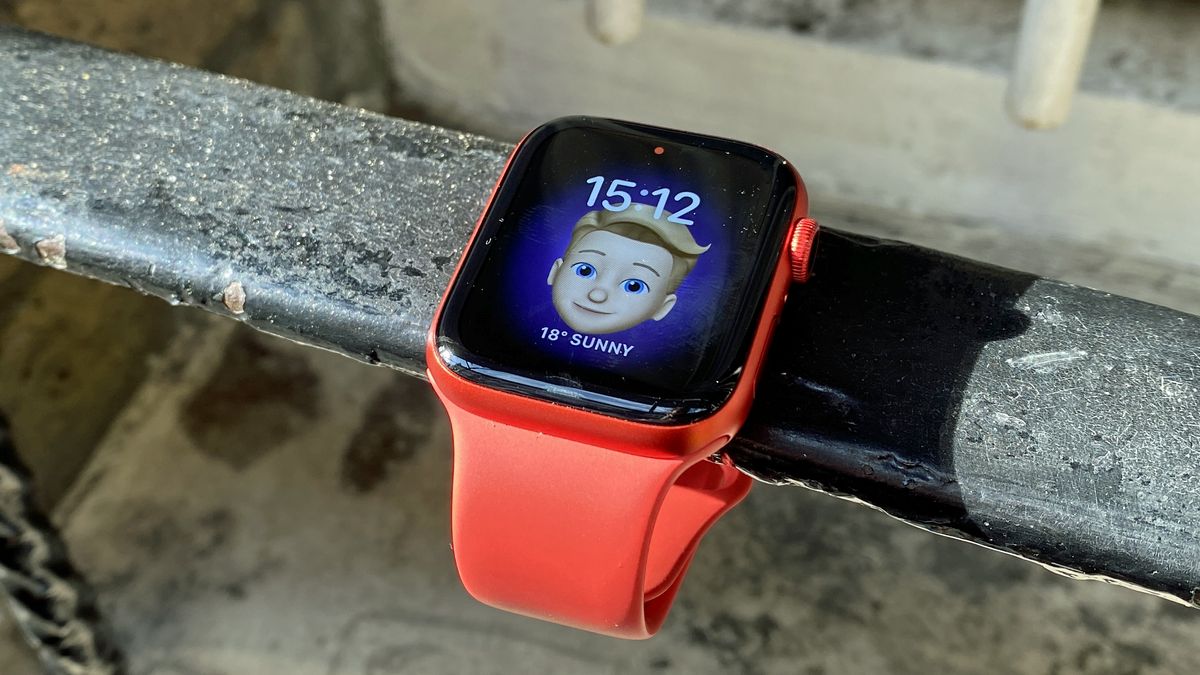


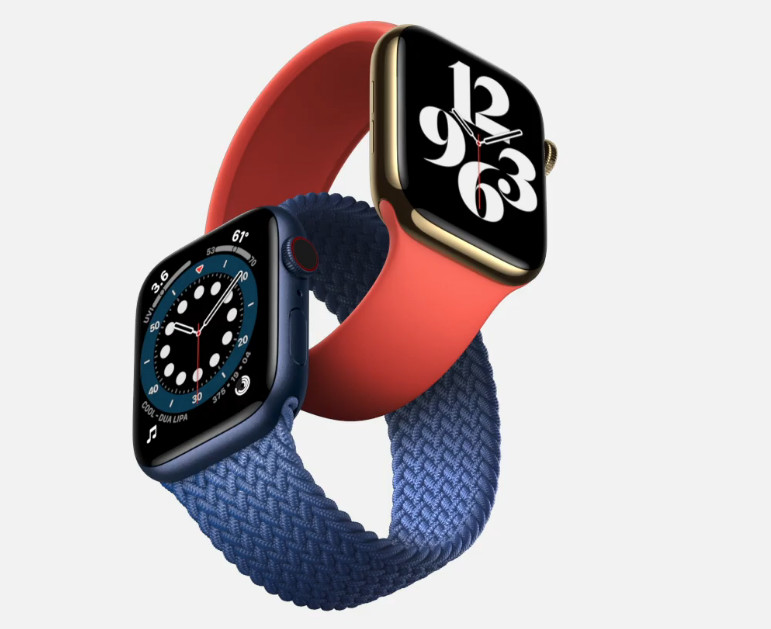













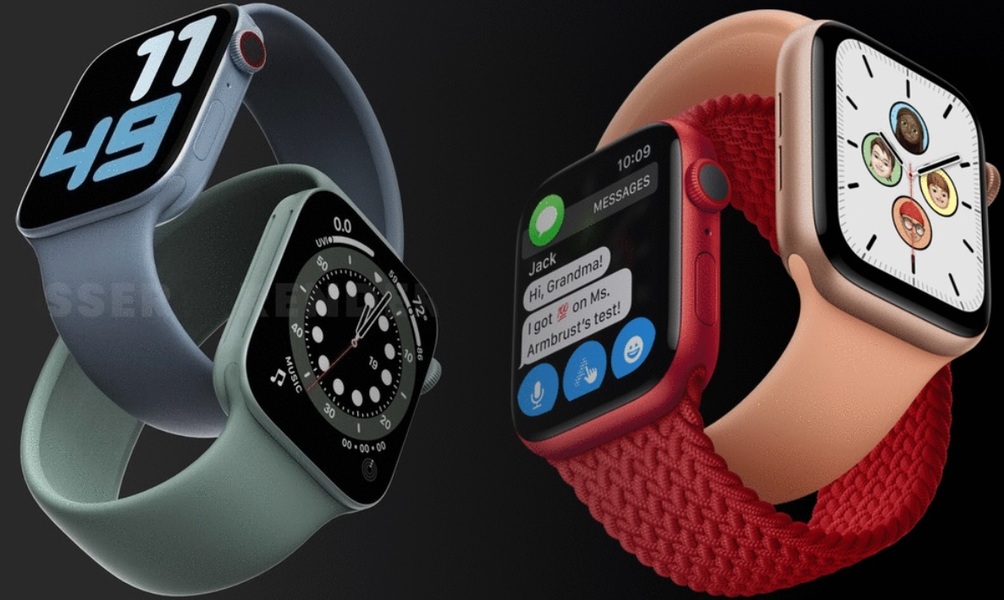


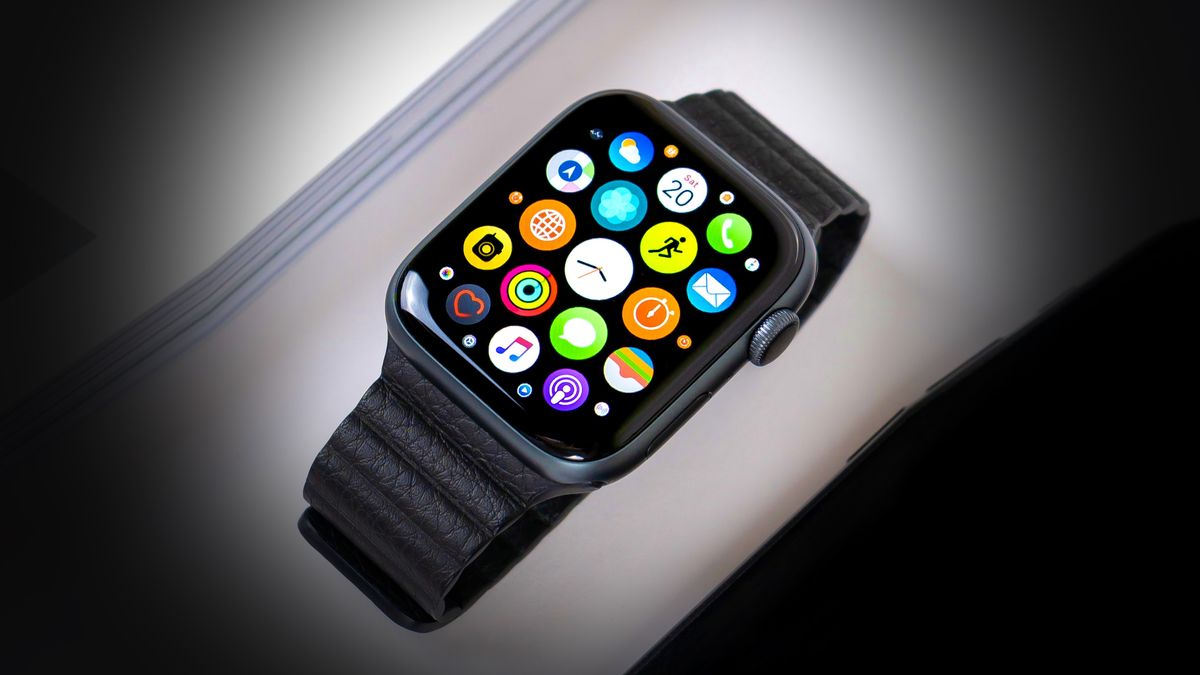
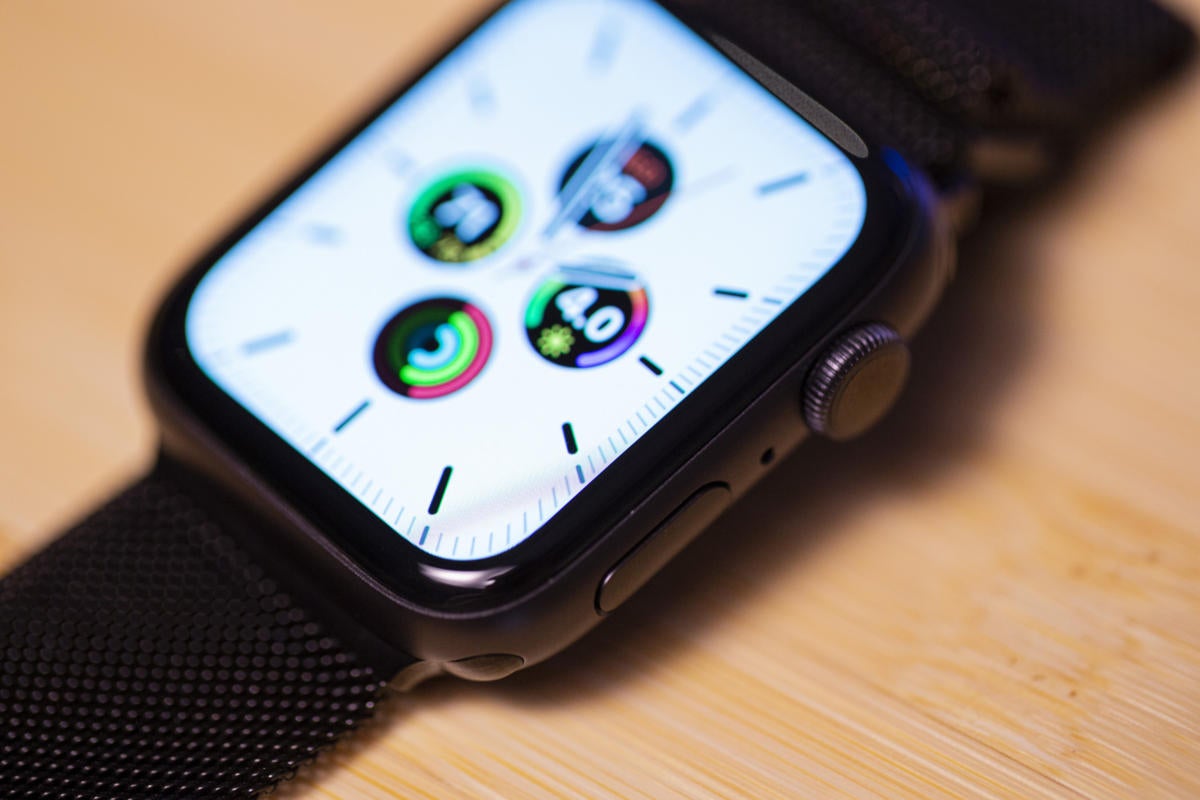






No comments:
Post a Comment
Note: Only a member of this blog may post a comment.